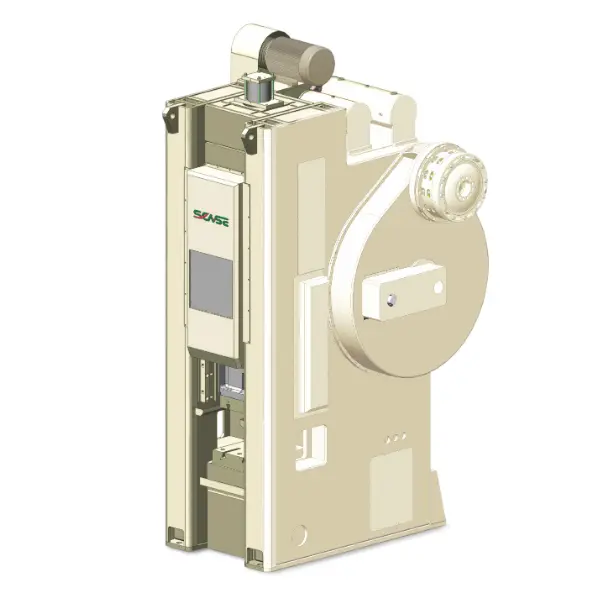How Cold Forging Presses Can Improve Manufacturing
Cold Forging Presses have emerged as a pivotal tool in the manufacturing industry, offering a way to produce high-quality, precision-engineered components with greater efficiency and reduced costs. Unlike traditional hot forging methods, cold forging uses precise tooling to compress metal billets at lower temperatures, resulting in components with superior mechanical properties and surface finishes.
The transformation in the manufacturing sector is driven by advancements in technology and shifting market demands. Cold Forging Presses stand out as a key driver of this evolution. While the early days of manufacturing featured manual labor and simpler machinery, the emergence of hot forging processes brought about significant refinement. However, these methods still faced limitations, such as higher energy consumption and the risk of defects due to inconsistent heating and cooling.
Cold Forging Presses represent a significant leap forward in manufacturing technology. They are transforming industries like automotive, aerospace, and consumer goods, where the demand for lightweight, durable, and high-performance components is increasing. By providing a cleaner, more efficient, and more reliable manufacturing process, cold forging presses are enabling companies to stay competitive and meet the evolving needs of the market.
Technical Aspects and Design of Cold Forging Presses
The technical design of Cold Forging Presses is a testament to modern engineering excellence. These machines feature high-pressure chambers that can exert over 4,000 psi, ensuring that metal billets are deformed without cracking. The forging process itself is highly controlled, involving precise monitoring of temperature, pressure, and tooling to achieve uniform results.
Modern Cold Forging Presses incorporate advanced automation and real-time monitoring systems. They use multi-pad anvils for consistent thickness control, cooling systems to manage heat, and safety mechanisms to prevent overloading or mechanical failure. This level of precision allows for the production of complex geometries and high-quality components with minimal defects.

Benefits of Cold Forging Presses in Manufacturing
Improved Product Quality
One of the most significant advantages of Cold Forging Presses is the production of high-quality, defect-free parts. The precise forging process minimizes surface defects and ensures consistent material properties, making it ideal for components that require tight tolerances. For example, Ford has implemented cold forging presses to produce lightweight engine components, reducing weight by up to 30% and improving fuel efficiency by 10%.
Enhanced Productivity
Cold Forging Presses can produce parts faster than traditional methods, reducing lead times and enabling manufacturers to meet just-in-time demands. This not only cuts costs but also enhances responsiveness in dynamic markets. Airbus, for instance, uses cold forging to produce small but essential components for aircraft engines, ensuring durability and efficiency.
Reduced Environmental Impact
The adoption of Cold Forging Presses also contributes to a more sustainable manufacturing process. These presses use less energy than hot forging methods and produce fewer by-products, reducing both energy consumption and emissions. By addressing environmental concerns, manufacturers can meet stricter regulatory requirements and appeal to growing consumer demand for eco-friendly products.
Cost Savings
Cold Forging Presses offer substantial cost savings through lower material waste, faster production, and lower energy use. Initial investments may be high, but the long-term benefits, such as reduced downtime and increased efficiency, often justify the costs. This can lead to higher profit margins and a competitive edge in the market.
Operational Impact and Business Strategies
The operational impact of Cold Forging Presses is profound. They reduce operational costs by lowering material waste, speeding up production, and minimizing energy use. For businesses, this translates into higher profit margins and a competitive edge.
Small businesses and large corporations alike can benefit from adopting Cold Forging Presses. A strategic approach to implementation is crucial. Start with pilot projects to gauge the performance and cost-effectiveness of the technology. Training programs are essential to help operators and engineers understand the advanced control systems. Cost-benefit analyses can help determine the optimal investment, considering factors like part volume and complexity.
Long-term benefits include increased reliability and the ability to produce complex geometries that were previously unattainable. This opens up new market opportunities, particularly in industries requiring high-performance components.
Challenges and Considerations for Small Businesses
While Cold Forging Presses offer significant advantages, small businesses must navigate several challenges. Initial capital investment can be substantial, requiring careful financial planning. Technical expertise is another hurdle; operators must undergo training to understand the complex systems. Regulatory compliance and material availability are also considerations, particularly in regions with strict environmental regulations.
To mitigate these risks, small businesses can start with pilot projects to gauge the performance and cost-effectiveness of the technology. Gradual expansion helps in building the necessary expertise and understanding the long-term benefits. Regular training and ongoing support can also ensure that operators are well-prepared to handle advanced control systems.
A Transformative Technology
Cold Forging Presses represent a paradigm shift in manufacturing, offering precision, efficiency, and sustainability. By adopting this technology, businesses can enhance product quality, cut costs, and improve operational efficiency. As manufacturers continue to innovate, Cold Forging Presses will remain a cornerstone of advanced manufacturing, setting the stage for the future.
The adoption of Cold Forging Presses is not just a strategy for cost savings and efficiency; it is a strategic investment in the future of manufacturing. By leveraging this cutting-edge technology, companies can stay ahead of the curve and meet the evolving demands of the market.
Key Benefits:
- Superior-quality components
- Consistent performance and defect-free parts
- Faster production and reduced lead times
- Lower energy consumption and reduced environmental impact
- Cost savings through lower material waste and higher efficiency
Future Potential:
- Continued innovation in cold forging technology
- Expansion into new industries and markets
- Improved sustainability and reduced environmental footprint
By embracing Cold Forging Presses, manufacturers can drive transformative change and position themselves as leaders in the global manufacturing landscape.
-
-
2.4Cost Savings





